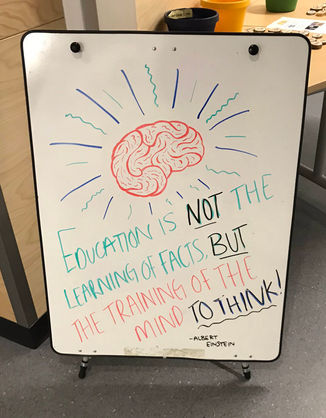top of page
INQUIRY BASED LEARNING
Inquiry-based learning approaches allow students to deepen their learning around themes and questions they are interested in and connected to. Inquiry is moving beyond the 'research project' and creating a culture of thinking and curiosity. There are many different pedagogical approaches that will enable educators to co-create this culture with their students. Find detailed descriptions of these and resources to support your learning below.
GALLERY: INQUIRY IN THE CENTRAL OKANAGAN
Galley: Inquiry in the Central Okanagan
HOW TO CREATE A CULTURE OF INQUIRY
Creating a Culture of Inquiry
All of the boxes below discuss different pedagogies that will support you in creating
a culture of inquiry. Click the image in each box for more information.
Inquiry 1
Inquiry 2
Inquiry 3
Inquiry 4
Inquiry 5
Inquiry 6
LEARNING RESOURCES
Learning Resources
Click on the image of the book for more information about how to co-create a culture of inquiry with your students. Also, learn from the educator stories/case studies within some of the texts.
Articles and Blogs
ARTICLES and BLOGS
Click on the blog posts, articles, and google folders below to learn from the experts. They will
teach you how to create a learning environment where thinking and curiosity thrives.
Building a Question Tubric
Tubric
VIDEOS
Videos
Inquiry Based Learning
Inquiry Based Learning

Search video...

How time travel will be invented
01:58

School is for learning to live, not just for learning | Susan Harris MacKay | TEDxWestVancouverED
19:40

If students designed their own schools...
14:26
bottom of page



























































































